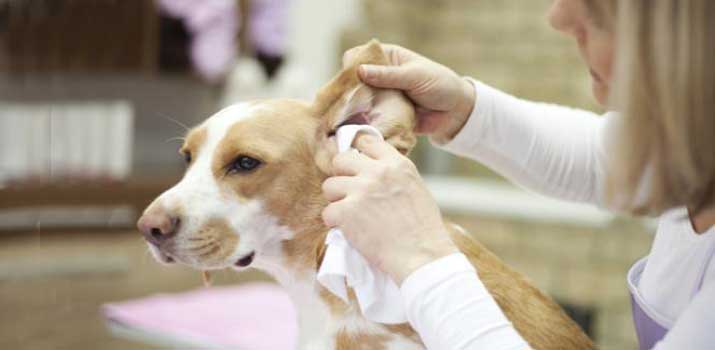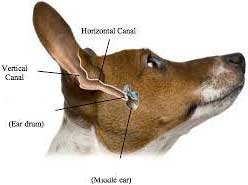
Ever wonder why your dog shakes its head so vigorously after a bath or romp in the rain? Typically, that act of head-shaking is an attempt to get rid of as much water in their ears as possible.
Despite the love many dogs have for swims and splashes,
having moisture in the ear canal is not a comfortable sensation.
A dog’s powerful sense of hearing can make the subtle sloshing and bubbling that goes on in the ear canal a nightmare.
Pair that with the change in pressure and the risk of infection, and you have a pretty serious situation on your hands.
Your pup might start to go into a bit of a frenzy.
In addition to erratic head-shaking, you might see your pooch rubbing its ears with its paws.
Don’t ignore those apparent cries for help! There are a couple of things you can do to help dry the ears, restore your dog’s comfort, and keep them healthy.
Why Removing Water from Your Dog’s Ears is Crucial
If you’ve ever gotten water stuck in your ears, you know how uncomfortable the situation is. For dogs, that feeling is even worse. Not only that, but it can pose some grave health issues.
Water and the closed environment of your pup’s ear canal do not mix!

Canines have a long and narrow ear canal. Not only is it cavernous, but there’s an almost 90-degree bend. The structure of the ear canal makes it difficult for moisture to evaporate naturally.
Unfortunately, that leads to further complications. The leftover water can quickly set the stage for bacteria and fungus to take over.
Yeast and bacteria love damp and humid environments.
Once water gets into the ear, it creates the perfect setting for organisms to flourish. Before you know it, your dog will suffer from painful ear infections.
If not treated, deep infections can rupture the eardrum and even cause permanent ear loss.
All dogs are susceptible to infections. However, dogs with long and flappy ears have it worst. The large size of their ears stops airflow, making natural evaporation even more challenging.
Moisture in the ear isn’t just a matter of comfort or convenience.
It’s something that can lead to severe health complications, so you should always take precautions to dry your dog’s ears.
Whether after a scheduled bath or impromptu dip in the lake, always take steps to remove water.
How to Remove Water from Your Dog’s Ears
Now that you understand how important it is to dry out your dog’s ears to take action, how do you approach this complex task?
Use a Cloth for the Outer Ear
Begin by physically drying the outer ear with a clean cloth. The outer ear, also known as the pinna, is the flap of skin that makes up the ear’s funnel.
Some dogs have triangular and pointed pinnas. Others have large and flappy ones. Whatever the case may be, take some time to dry it out.
Do not go into the ear canal. Also, never attempt to use a cotton swab in the ear canal! Doing so could damage the sensitive tissue and create more issues than you bargained for.
Please stick to the outer ear and the area surrounding it. Pay close attention to the fur next to the ear’s opening. Saturated hair can drip water into the ear later.
Use an Ear Rinse
Commercial ear rinses are a must-have. These products look a bit counterintuitive at first. But, the ingredients within the formula promote drying.
They usually contain some alcohol and antiseptic. Alcohol serves two purposes.
First, it helps to neutralize any bacteria that might be hiding in the canal. Secondly, it promotes evaporation to leave your dog’s ears dry!
Rinses with antiseptic can also help break down earwax. These products are essential for canine otic care, and we can’t recommend them enough!

To use an ear drying rinse, lift your dog’s ears and put the recommended number of drops directly into the ear canal.
Make sure to read the instructions thoroughly here.
Some products have specific portion sizes. Others are laxer and require you to flush the entire ear.
After putting the solution in the ear canal, massage the base of the ear for about 30 seconds. Then, stand back! Your dog will immediately shake its head once you let go of its head!
Follow up by drying the outer ear with a dry towel. Don’t be surprised if you see bits and pieces of wax on the fur.
Keep an eye on your dog’s behavior, and don’t be afraid to perform another flush the next day if your dog is still having issues.
Conclusion
Water in your dog’s ear is no joke! Always do what you can to remove water. It’s better to be overly cautious than risk infections!
If your dog does show signs of an ear infection, take them to the vet immediately.
Your vet has the necessary medications to treat infections swiftly. They should also have the tools to dry out the canal.
Also Read: Cold Dog Ears: 4 Causes

